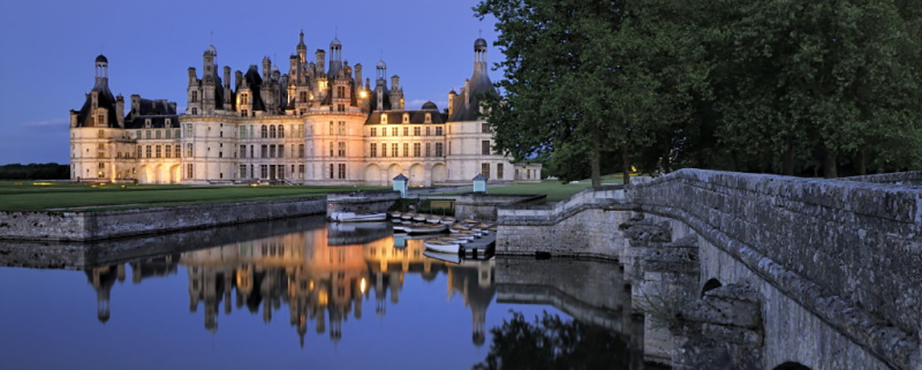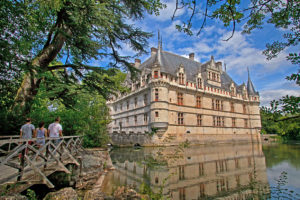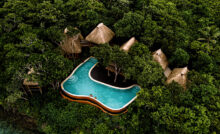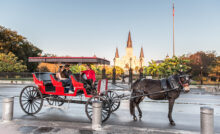The Crest of Ancient Royale


France never fails to lure one to her side, scenic wonders. But, the jewel on her crown is her legacy. The reminiscent of the ancient throne still walks her palaces, ever the proud and majestic. Transport to the age of Renaissance, as we take you through the most beautiful architectural wonders France cradles in her lap.
While the rebirth of a new era set roots in Italy, the world was yet to know that its echoes perhaps would resonate wildly in the heart of France, almost a century later. When the Renaissance period went down in history as the harbinger of modernity, it threw France into a period of Revivalism. The 14th century witnessed the early seeds of Renaissance while the later centuries saw the roots growing deep into French soil; a period which broke away with traditions and looked longingly into the glories of the ancient past.
The early seeds of Renaissance architecture bloomed under Francis I who followed a Policy of Conquer, over the art of Italy and the next 3 decades saw the arrival of Italian stylistic trends into the French architectural scene, along with famed Italian artists like Leonardo Da Vinci, Benvenuto Cellini, and Rosso Fiorentino. It is no surprise that France’s most majestic monuments belong to this period, of creative and intellectual ferment.
Chateau de Azay-le-Rideau


This early reminiscent of French Renaissance Architecture showcases itself in the Chateau de Azay-le-Rideau, residing in the abode of monumental beauty in France. The Loire Valley has birthed the great Chateaus, featuring diverse architectural panaches from different epochs. Strategically positioned on a secluded island on the Indre River, this Chateau emanates poise and grandeur. It is an early attempt to incorporate Renaissance elements into Gothic structure. Despite the efforts, the Chateau remained incomplete due to the political undercurrents of the time. This is quite evident from the ‘L’ shaped building, a result of the confiscation of the Chateau before completion; a mark that makes it unique.
Chateau de Fontainebleau


The Louvre Palace
Chateau de Chambord
The Amboise Castle
Chateau du Clos Luce
More from our site
Recent Posts
Shaping Tomorrow’s Golf Champions With Leela Palace Bengaluru
The 3rd edition of The Leela Golf Tournament celebrated young talent and brought together skill, precision and camaraderie!
The 3rd edition of The Leela Golf Tournament celebrated young talent and brought together skill,…
The Duo Behind KAIA Goa & Gigi Bombay, Redefines Hospitality
In conversation with the founders of Pawan Shahri and Nikita Harisinghani, the duo behind Chrome Hospitality Asia
In conversation with the founders of Pawan Shahri and Nikita Harisinghani, the duo behind Chrome…
Precision, Durability, and Swiss Legacy
Victorinox launches the Swiss Army collection, featuring three distinct models that emphasise exceptional quality, resistance and versatility
Victorinox launches the Swiss Army collection, featuring three distinct models that emphasise exceptional quality, resistance…
A New Era of Luxury Interiors With Sussanne & Gauri Khan
Sussanne Khan & Gauri Khan unite to bring an awe-inspiring, six-storey sanctuary of luxury, art, and design in Hyderabad
Sussanne Khan & Gauri Khan unite to bring an awe-inspiring, six-storey sanctuary of luxury, art,…
Air India x Lufthansa: Fly To These International Destinations Now
Expanding their codeshare partnership, Air India and Lufthansa Group have added 100 new routes to their combined network
Expanding their codeshare partnership, Air India and Lufthansa Group have added 100 new routes to…
Luxury’s Most Recent & Vibrant Launches This Season
The luxury landscape is brimming with bold innovations, striking partnerships, and immersive experiences
The luxury landscape is brimming with bold innovations, striking partnerships, and immersive experiences


